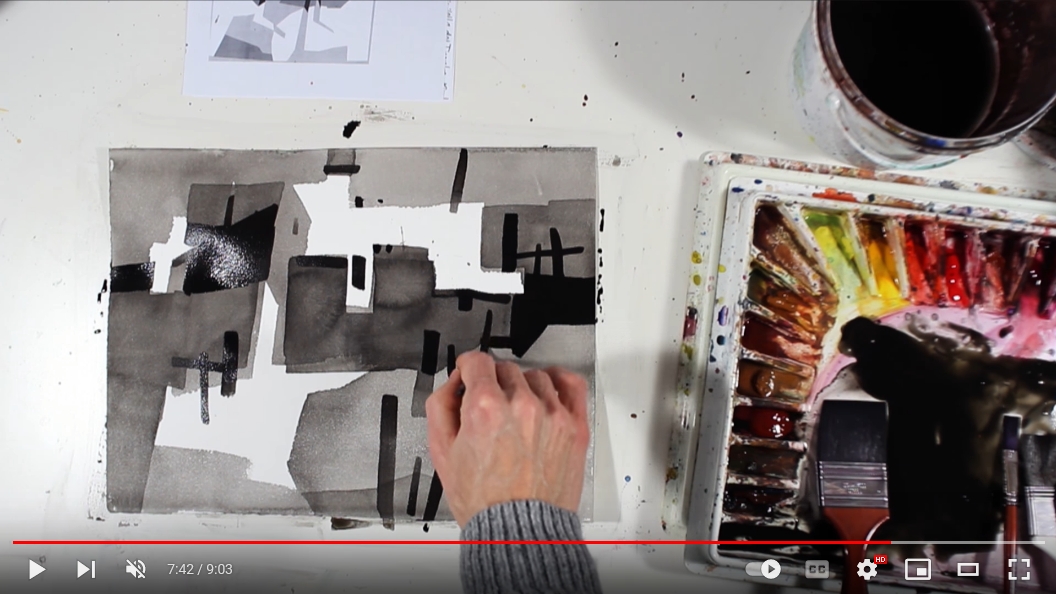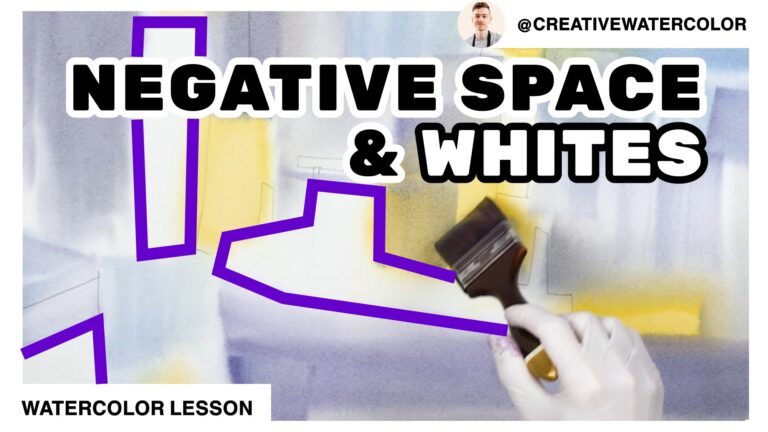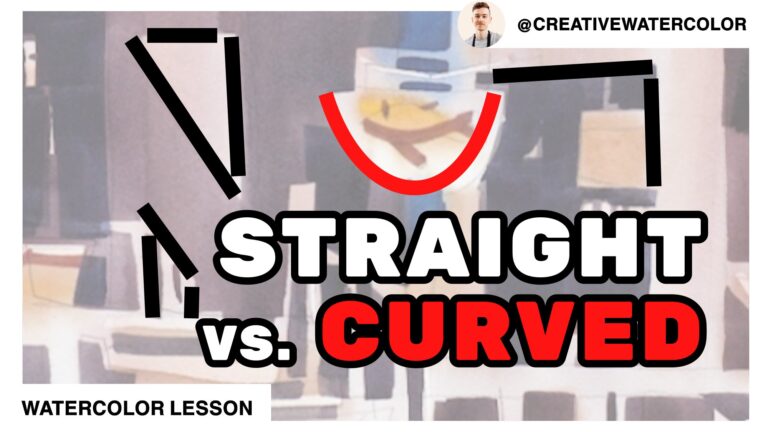Learn to see and paint patterns – and master watercolor. In this watercolor tutorial you’ll learn more about patterns, how to see and paint them and through this understanding master watercolor.
So often I encounter students and watercolor beginners or general public who upon looking at my work remain silent, at a loss for words. I can see their honest and utter bewilderment at how simple some of my works are. When they finally speak they say something along the lines: “At first I thought a child painted this!” I don’t take their remark personally, because I know they’re in shock. If they catch themselves soon enough they may add “Oh, I’m sorry, I didn’t…”
When such experience occurs, I like giving them some context through the following example. Imagine going to the movies. Whatever your age, you’re an adult and you take a couple of kids with you. One is a young teenager and the other a kid of 9. The movie is over and you are positively elated by the experience: the acting, the dialogues, the story and the oh, the clever twist! You look at the teenager and you see they’re bored out of their mind. The 9 year old had the worst time still – he couldn’t even read the subtitles fast enough!
They say that beauty is in the eye of the beholder. Same goes for art in a more general sense. Some can see and appreciate what it offers while others may not even be able to notice what the other group talks about. The most obvious example is abstract art. Some can’t stand it, others love it and others still don’t understand it at all.
All art is basically abstraction. We use symbols if we want to make a painting that resembles the world we live in but even still, those symbols are just flat, two-dimensional shapes. The way we organize these shapes is up to our wit, experience and skill.
Eventually, if enough of each has been acquired, we start to look beyond the subject and the individual shapes. We start noticing patterns. How shapes and values and colors group together and relate to each other within the painting rectangle? That’s when we start working with patterns.
In this video, notice how I intentionally simplify my subject to the extreme. Even then, I make sure that the scene is representational. I also restrain from using color. This helps simplify matters so that you can more easily focus on patterns – color is usually very distracting to most beginners.
After you watched the video pause it at the end and notice how the individual value masses create patterns.
Notice the three major white shapes. Each shape is not only well constructed but well placed. Notice how the grouping of whites sits on the page and is balanced, yet interesting and asymmetrical.
Notice how the middle values surround these whites and in themselves create a pattern as well, with subtle value shifts throughout and across the page.
Notice also the darks, which are placed strategically so that balance is achieved.
These are just some examples of patterns that may go unnoticed by the less educated eye. Yet, these patterns are the foundation of your paintings. If you’re unaware of them, just think of how much you’re leaving to chance when making your paintings!




